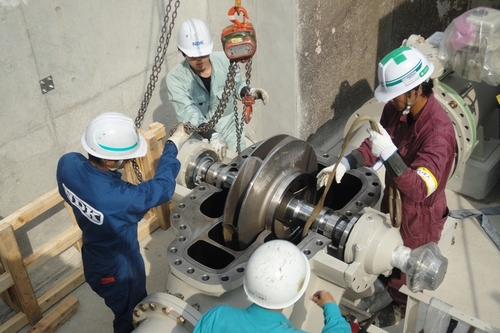September 17, 2013
Previously Untapped Water Discharge from Japanese Dam Now Generates Electricity for 300 Households
Keywords: Energy Conservation Energy Policy Non-manufacturing industry
The Chugoku Electric Power Co. announced on April 10, 2013, that it had started operation of its Takano Power Plant, which utilizes "maintenance flow discharge" from an existing dam to generate electricity. The power plant has been built directly under the Kannose Power Plant Kobo Dam, located on the border of Hiroshima and Shimane Prefectures, and makes effective use of up-to-now untapped hydro energy.
Hydropower plants use water from dams, but there must be a certain amount of constant water flow discharge, called maintenance flow discharge, in order to sustain the natural environment, water use, and fisheries downstream. Such priority discharge water from the dam is now utilized for hydropower generation from maintenance flow discharge.
The Takano Power Plant was constructed next to Kobo Dam's existing facility. It employs a general-purpose water pump in place of the conventional turbine to reduce construction cost. To generate power water enters from what would normally be the outlet to run the turbine inside the pump, in reverse. The facility's total construction cost was approximately 200 million yen (about U.S.$2 million).
Compared to the Kannose Power Plant, whose maximum output is 20,000 kilowatts, the Takano Plant only generates 140 kilowatts, yet it can generate one million kilowatt-hours a year, enough to power 300 households, and is expected to reduce carbon dioxide emissions by approximately 700 tons annually.



